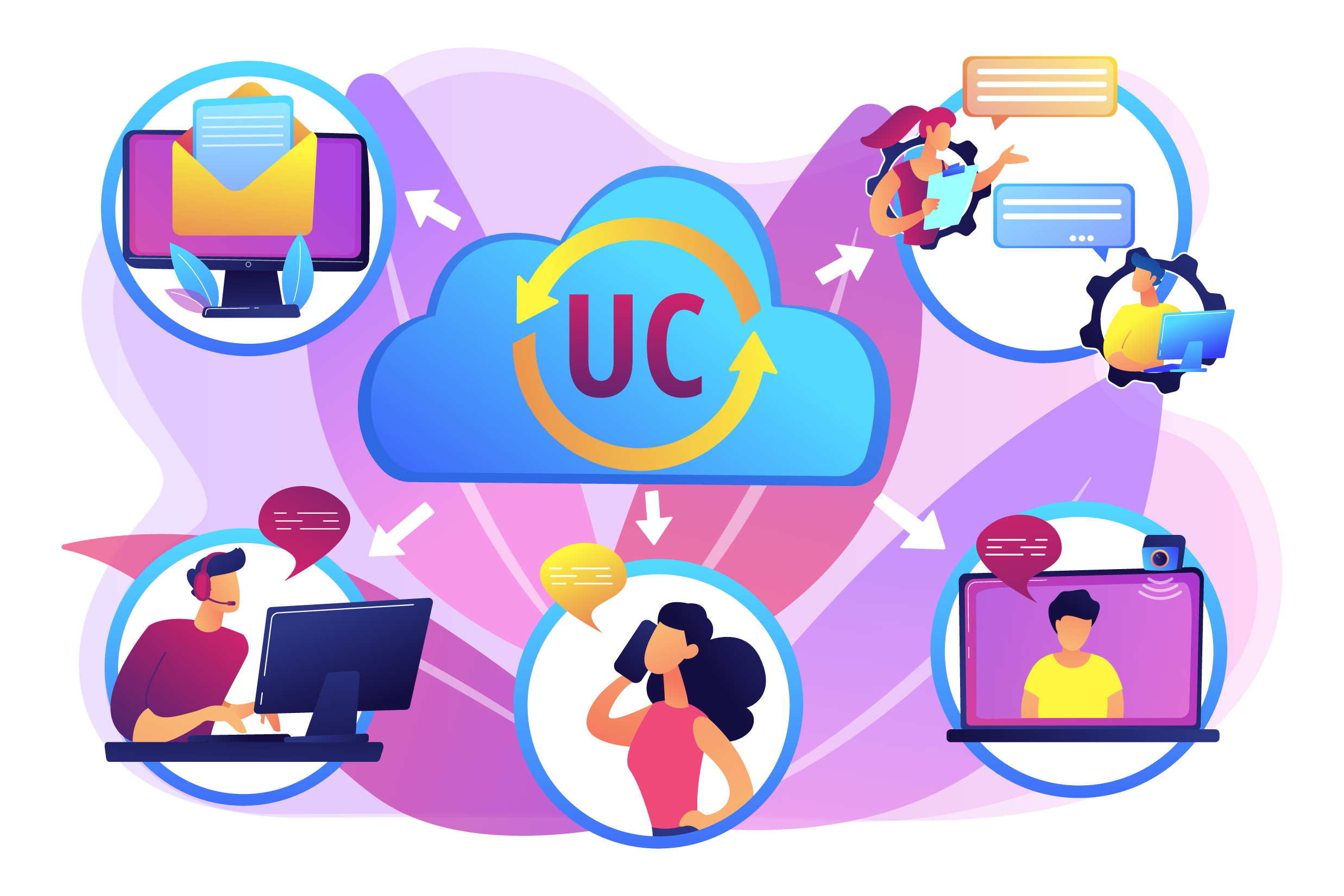What is Unified Communication?
Unified communication (UC) refers to a system that unifies the diverse communication channels over a single screen. The touch points of communication have increased from phone calls, video conferencing to instant messaging, email, WhatsApp, social media channels and the list goes on. With these many communication points it can get quite complicated to collect all the information needed to meet customer’s and agent’s demands. The UC brings all these communication methods together and makes them talk with each other, delivering a unified phone system. It breaks down silos and serves to enhance business efficiency.
In the landscape of the COVID-19 pandemic as people were forced to work remotely, UC witnessed an unprecedented market growth.
As of 2020, 42% companies have increased cloud application and unified communication adoption.
85% of the world’s leading companies feel that APIs that extend business communications for both employees and customers are crucial to business growth.
With the rise of a digital workforce, companies are adopting agile methodologies to enable people to access the tools they need to perform irrespective of where they are and what devices they are using.
Unified Communication Vs VoIP:
The era of land based telephone communications is fast disappearing. They’re slowly being replaced by VoIP and Unified Communication technologies. VoIP focuses on internet-based video calling It has many advantages such as:
- Speed and reliability in making calls
- Reduced costs compared to private phone lines
- Greater control over phone calls
A UC differs from VoIP mainly in having an enterprise-wide scope. UC as a group of technologies provides many valuable features and capabilities to phone calling. UC uses VoIP as the core and builds upon it to offer increased business functionalities.
As customer engagement is getting more multi-channel, unified communications with omnichannel engagement are revolutionizing the ways of customer experience. From being employee productive to harnessing organizational agility, UC can deliver customer satisfaction through effective communication processes. Omnichannel offers high quality and flawless customer experience between or within contact channels.
Features:
Work from Home Capabilities:
Unlike the traditional inflexible systems, UC offers information to be stored and maintained remotely with the help of the cloud. Thereby, ensuring business continuity irrespective of where employees are working from.
Unified Messaging:
It’s a vast upgrade to the existing voicemail. Users can receive a voicemail along with a transcription of it. This ensures that nothing slips through while also improving the way people communicate.
Softphones for Mobiles and Desktops:
A deskphone can be synced with an application in both VoIP and UC. This allows users to handle calls with ease. Coming with advanced features such as Do Not Disturb and call forwarding along with being compatible with Linux, Apple and Microsoft operating systems allows for prompt and proactive communication.
Integration:
Organizations can hardly rely on a single system these days, even if it’s a UC system. Owing to varied business needs and processes being unique to organizations, there’s a need to integrate communication systems with third party tools. UC allows this to happen, thereby strengthening the overall system and rendering business specific customization.
Presence Management:
Within UC it means more than just seeing who’s online or offline but includes monitoring tools, call status options, company directory etc. Productivity of an organization can be gauged by understanding how busy the employees are throughout the day and also tracking call trends.
Benefits:
Slash Costs:
Managing multiple carrier contracts can prove to be expensive for organizations. UC can reduce this cost burden to a great extent and allow space for enterprises to invest in developing new products that can serve customers better.
Facilitates Innovation:
UC allows the organization to grow competitively by offering greater flexibility and scale to transform a business.
Better CX and User Experience:
It renders a collective strength to organization by making the employees work together through a simple and interconnected range of tools. This also allows customer issues to be resolved faster and more efficiently.
Why is it going to matter in 2022?
Gartner predicts the Unified communications market share to more than double by 2023.
The entire UC market has witnessed a significant surge in demand due to the pandemic situation. As the traditional phone systems posed hindrances owing to their inflexibilities, UC opened up avenues for productive remote working. Concrete buildings no longer define workspace.
According to some estimates UC has pulled ahead of the entire business software industry.
The UC pricing is accessible to organizations of any size. Integrated with the cloud-delivery model, it affords greater scalability while meeting stakeholder demands. A typical business requires a number of tools to call customers, chat internally, host meetings or collect feedback from customers. If these tools are not integrated, it costs organizational agility and erodes customers trust. Unified Communication acts as the ultimate consolidator of communication processes in an organization.
NovelVox offers unified communication tools to leverage your organization’s capabilities and grant it a competitive edge in a digitally-driven world.




















